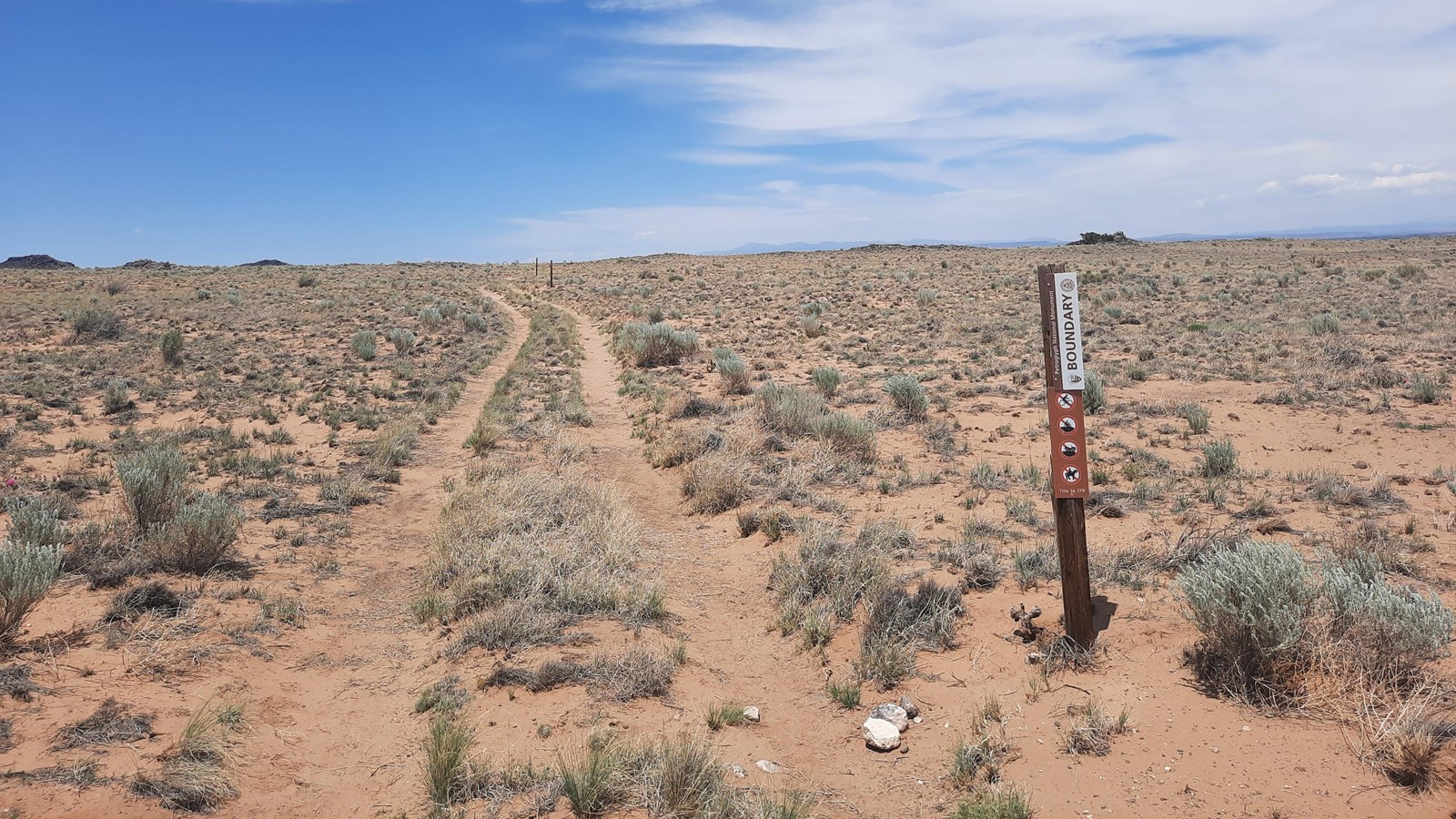Last updated: July 15, 2025
Place
Volcanoes Day Use Area Stop 10

NPS Photo / Ben Holt
Cellular Signal
You have now reached stop 10 of the Volcanoes Day Use Area audio tour. You have walked 2.24 miles or 3.6 kilometers.
Have you noticed all the little holes along the side of the trail? They can sometimes be hard to spot, tucked away under the desert foliage or with partially collapsed openings. Out here on the west mesa there is less cover than what the escarpment offers. Many of the animals that live out here find cover by digging. Look closely and you may be able to notice signs from a variety of desert life.
Even very small holes under ½ inch can be home to creatures that are crucial to this ecosystem, such as the digger bee. These bees are uniquely adapted to their hot desert environment. The female will dig diagonally about 12 inches deep and create a special chamber at the bottom called a “brood pot” which is filled with wax and pollen. An egg is then laid in this pot and then sealed inside with wax. Finally, the female will partially rebury the chamber to give further protection to the egg. In this way, the larva will be able to hatch in safety from predators and the harsh sun.
Moving up in size, you may see slightly larger holes around ½ inch to 1 and ½ inches across. If you see strands of silk along the walls, it likely belongs to a tarantula. Despite their intimidating size, tarantulas generally pose no threat to humans. When threatened, a tarantula will rear up on its hind legs to look larger and scare off the threat. However, another creature, the Pepsis Wasp or Tarantula Hawk, uses this defense mechanism against the Tarantula. When the spider rears up, the female Pepsis Wasp will deliver a powerful paralyzing sting to the Tarantula before dragging it into its burrow. Inside, the wasp will lay a single egg on the immobilized spider and seal the burrow, allowing the larvae to hatch and feed on the spider. Despite their aggressive larval stage, the adult Pepsis wasp feeds primarily on nectar and is an important pollinator of keystone species like Milkweed.
If you see a larger hole, around 3 to 6 inches, it could belong to one of the desert’s cutest inhabitants, the Kangaroo Rat. These rodents are aptly named due to their impressive leaps up to 7 feet which help them evade predators. However, their most impressive adaptation in this arid environment is how they obtain water. The kangaroo rat mostly feeds on seeds and is so efficient at retaining water, that it can get all the water it needs from its diet and never needs to drink water to survive!
These are only a few of the animals that call burrows on the West Mesa home. As you explore you may even see larger burrows that could belong to squirrels, foxes, coyotes, or even badgers! Remember to never disturb an animal’s habitat. This is especially important here, where venomous rattlesnakes are opportunists who may make use of any burrow they find.
Continue along the trail another 0.57 miles or 0.92 kilometers to reach Audio Tour Stop 11 at the Historic Bond Corral.
